| ALL |
|
RUSSIA and USSR
| OVERVIEW |
|
| |
The origins of 20th-century Russian architecture derive not only from technological advances in construction at the turn of the century but also from a reaction to 19thcentury Western eclectic styles that architects in St. Petersburg and Moscow applied profusely to the facades of apartment houses and commercial buildings. By the 1870s, there arose a national style based on decorative elements from medieval Muscovy as well as on motifs from folk art and traditional wooden architecture. Major examples of the Russian style in Moscow include the Historical Museum (1874–83), built on the north side of Red Square to a design by Vladimir Shervud (1833–97), and the Upper Trading Rows (1889–93) by Alexander Pomerantsev (1848–1918), assisted by the construction engineer Vladimir Shukhov (1853–1939). The influence of this historicism continued through the early 1900s as the “neo-Russian” component of the style moderne. Painters such as Viktor Vasnetsov (1848–1926), who created the entrance building at the Tretiakov Gallery (c. 1905), and Sergei Maliutin (1859–1937) were particularly active in using traditional Russian decorative arts as part of a new architectural aesthetic.
The “new style,” or style moderne, that arose in Russian architecture at the turn of the century included among its diverse sources the Arts and Crafts component of the Russian Revival style as well as Art Nouveau and the Vienna School. Its main emphasis was on the innovative use of materials such as glass, iron, and glazed brick in functional yet highly aesthetic designs. The style flourished above all in Moscow, where its leading practitioner was Fedor Shekhtel (1859–1926). Shekhtel worked primarily for patrons among Moscow’s entrepreneurial elite, such as the extended Riabushinsky family. His most notable work was a mansion (1900–02) for Stepan Riabushinsky, which is rivaled by his more modernist design for the Alexandra Derozhinsky mansion (1901). Shekhtel also designed a number of commercial buildings and public buildings in Moscow, such as the Yaroslavl Railway Station.
Other leading architects of the early 20th century in Moscow include Lev Kekushev (1863–1919), Adolf Erikhson, and William Walcot (1874–1943). All three were involved in the prolonged construction of one of the largest and most significant moderne buildings in Russia: the Hotel Metropole (1899–1905). Like Shekhtel, both Kekushev and Walcot produced major examples of the modern style in the design of private houses for wealthy clients.
In St. Petersburg, the style moderne appeared primarily in the design of apartment complexes by architects. (St. Petersburg’s relatively compact urban plan impeded the construction of detached private houses.) Yet, despite the rapid expansion of apartment space, the lack of adequate housing, particularly for workers, remained a major social problem. The style moderne also appeared in St. Petersburg’s commercial buildings, such as the Singer Building (1902–04) on Nevsky Prospekt by Pavel Siuzor (1844-c.1919).
After 1905 the style moderne began to merge with a form of modernized classicism, known in Russia as neoklassitsizm. Architects in St. Petersburg were especially receptive to the neoclassical revival, and they applied it to almost every major structural type, including banks, department stores, apartment buildings, and private houses. One of the most accomplished and versatile architects in this style was Fedor Lidval (1870–1945), designer of the Hotel Astoria (1911–12).
In Moscow the most accomplished revivalist was Roman Klein (1858–1924), architect of the Museum of Fine Arts (1897–1912; known since 1937 as the Pushkin Museum) and the Muir and Mirrielees department store (1906–08). Although less prolific than Klein, other architects distinguished themselves in a more austere variant of the neoclassical revival for major office buildings in Moscow’s commercial center. In contrast to their American contemporaries, Russian architects made little use of the skeletal frame in the design of large buildings, but they frequently applied new techniques of reinforcedconcrete construction.
Russia’s rapidly developing industrial base lay in a shambles after a war, a revolution, and a civil war; technological resources were extremely limited in what was still a mainly rural nation; and Moscow’s population—poorly housed before the war—increased dramatically as the city became in 1918 the administrative center of a thoroughly administered state. One of the USSR’s earliest edicts, in August 1918, repealed the right to private ownership of urban real estate. Even as the country plunged into civil war, groups of architects in Moscow and Petrograd (formerly St. Petersburg) designed workers’ settlements that represent an extension of the Garden City movement which had already tentatively appeared in Russia during the decade before World War I.
The prerevolutionary building boom had established a viable foundation, in both architectural theory and practice, for urban development on a large scale. Furthermore, the Russian architectural profession was relatively intact after the emigration that decimated other areas of Russian culture after the revolution. In addition, the most prominent art and architectural schools in Moscow and Petrograd were capable of providing a base for the development of new cadres despite sometimes sweeping changes in the composition of the faculty. Nonetheless, there were enormous problems in resuscitating these institutions, of allocating resources for new construction, and of devising a plan for coordinating further development.
With the gradual recovery of the economy in the 1920s, bold new designs—often utopian in concept—brought the USSR to the attention of modern architects throughout the world. The assumption that a revolution in architecture (along with the other arts) would inevitably accompany a political revolution was soon put to the test by social and economic realities. The brief history of the Soviet avant-garde in architecture was marked by theoretical debates and factional disputes, such as that between rationalism and Constructivism. At the same time, the role of artists such as El Lissitzky, Kazimir Malevich, Vladimir Tatlin, and Nikolai Punin in defining new approaches to volume and structure had a profound impact on the conceptualization of avant-garde architecture.
Constructivism, the most productive modernist movement, adopted a rigorously functional approach to design that rejected “bourgeois” decorative effects and concentrated on clearly defined geometric volumes articulated on a monumental scale that expressed the ethos of the new state. Ironically, the backward condition of Soviet building technology in the 1920s often resulted in a primitive realization of those Constructivist projects that reached the stage of implementation.
In Moscow leading Constructivist architects and theoreticians included Moisei Ginzburg (1892–1946), whose most notable building was the apartment house (1928–30) for the People’s Commissariat of Finance; Grigory Barkhin (1880–1969), designer of the Izvestiia Building (1925–27); Ilya Golosov (1883–1945), architect of the Zuev Workers’ Club (1927–29); Panteleimon Golosov (1882–1945), author of the Pravda Building (1930–35); and the Vesnin brothers, Leonid (1880–1933), Viktor (1882–1950), and Alexander (1883–1959), architects of a number of major projects, such as the Likhachev Palace of Culture (1931–37), built for the workers of a large automobile factory.
These and other Constructivist projects in Moscow set a standard for functional design in administrative and apartment buildings as well as social institutions, such as workers’ clubs. Another prominent modernist active during the same period but not a part of the Constructivist movement was Konstantin Melnikov (1890–1974), known for his designs for exposition pavilions, a number of workers’ clubs (most notably the Rusakov Club, 1927–28), industrial structures such as the Leyland Bus Garage (1926–27), and his own house (1927–29) in the Arbat district of Moscow.
Important projects by Constructivist architects also appeared in other Soviet cities, such as Leningrad, Kharkov, Gorky (Nizhnii Novgorod), Sverdlovsk (Ekaterinburg), and Novosibirsk. Notable examples in Leningrad include the Kirov District Soviet complex (1930–35), whose overall design was entrusted to the architect Noi Trotskii (1895–1940). Beginning in 1928, the five-year plans, with their emphasis on the rapid expansion of heavy industry, led to the massive rebuilding of industrial centers. In Kharkov, a massive complex of several buildings known as the State Industry Building (Gosprom, 1926–28) was designed by an architectural team headed by Sergei Serafimov (1878–1939). In Sverdlovsk, whose entire city center was redesigned with the participation of architects such as Moisei Ginzburg, a model housing development known as “Chekists’ Village” (1929–38) was designed by I.Antonov, V.Sokolov, and A.Tumbasov. Industrial architecture also received much attention, as foreign architects such as Ernst May, Erich Mendelsohn, Hannes Meyer, and Albert Kahn collaborated with Soviet architects and engineers in creating mammoth industrial complexes. Theoreticians such as Ivan Leonidov (1902–59) developed concepts of the “linear city” for new industrial centers.
During the 1930s, more conservative trends asserted themselves in major buildings sponsored by the bureaucratic apparatus, as designs inspired by classical, Renaissance, and other historicist models received the party’s approval. Prominent traditionalists, trained in the prerevolutionary neoclassical revival, included Ivan Zholtovskii (1867– 1959), Aleksei Shchusev (1873–1949), and Noi Trotskii (1895–1940). Despite the formal break with Constructivism, earlier work by Shchusev and Trotskii belongs to the Constructivist movement, and other connections with the architecture of the 1920s continued throughout the 1930s. The grandomania of prewar Stalinist architecture is best expressed by the project for the Palace of the Soviets (1933–35) in Moscow, designed by Boris Iofan (1891–1976), Vladimir Gelfreikh (1885–1967), and Vladimir Shchuko (1878–1939). The structure was to be built on the site of the massive Cathedral of Christ the Savior (demolished in 1931), but the project was canceled in the late 1940s.
After World War II, architectural design became more firmly locked in traditional, often highly ornate eclectic styles, epitomized by the postwar skyscrapers in Moscow and other Soviet cities. Of the seven such towers in Moscow, the largest is the building of Moscow State University (1949–53) by Lev Rudnev (1885–1956), Pavel Abrosimov (1900–61), and Alexander Khriakov (1903–76). On this, as on several other projects during the Stalinist period, much of the construction was done by prison labor.
In the period following Stalin’s death, in March 1953, a reassessment of priorities, particularly in regard to the housing crisis, led to a functionalism that had been among the goals of Soviet design and planning during the 1920s. Teams of engineers and architects began to produce standardized plans that could be applied with relatively simple technology, and the pursuit of a historical framework for architectural style was largely discarded, as indicated by the abolition of the Academy of Architecture in the early Khrushchev era. The acceleration of standardized construction achieved an impressive volume, first with five-story apartment buildings that appeared throughout the country and subsequently with mass-produced buildings as high as 20 stories and, in rare cases, even higher.
The industrialization of building and the curbing of decorative pomposity produced a different set of problems. Apart from the general monotony of design, creative projects were constrained by the processes of standardized, “industrial” construction based on prefabricated modules or precast-concrete forms assembled on-site. The seams and cracks that resulted from such methods of assembly gave many buildings a shoddy appearance. Whatever the project type, Soviet architects were usually faced with a narrow range of options limited by mass-construction methods and meager financial resources.
Even showcase projects with considerable support shared in the general monotony. The most prolific practitioner of postwar Soviet modernism was Mikhail Posokhin (1910–89), who had collaborated in the design of a Stalinist apartment tower on Insurrection Square but shifted adroitly into the new functionalism of the Sputnik era. His design for the Kremlin Palace of Congresses (1959–61, in collaboration with A. Mndoiants and others) had the appearance of a modern concert hall of huge proportions, whose marble-clad rectangular outline was marked by narrow pylons—also faced with white marble—and multistoried shafts of plate glass. The main virtue of its style was how relatively unobtrusively the large structure stood among the historic Kremlin ensemble, part of which had been destroyed in the 1930s.
Not all Soviet architecture of the modern period descended to nondescript conformity. Futuristic construction technology appeared in the Ostankino Television Tower (1967, N.Nikitin, L.Batalov, and others), a reinforced-concrete monolith of impressive design and engineering. The ferroconcrete shaft, 385 meters in height (on a foundation of only four meters), supports a steel-frame antenna superstructure that rises another 150 meters. Technological ingenuity also characterizes the design of many contemporary sports arenas, which, like television, served the regime’s propaganda interests. Large stadium complexes began to take shape even in the late Stalinist period, such as Leningrad’s Kirov Stadium (1950, A.Nikolskii and others) on Krestovskii Island and culminating with the Luzhniki stadium complex (1955–56, A.Vlasov and others) in south Moscow. The emphasis on the culture of sports, which reached a crescendo in the preparations for the 1980 Summer Olympics, produced some of the most interesting forms in contemporary Russian architecture. An example notable for its high technology and sweeping lines is the Velotrek bicycle racing stadium (1978–79, Natalia Voronina and others) in the west Moscow suburb of Krylatskoe, with a bifurcated roof composed of rolled-steel membranes four millimeters thick stretched between a pair of tilted elliptical arches supported by a truss frame system.
With the demise of the Communist system in the USSR, the revival of private practice in architecture seems likely to change the face of the profession, even as new problems arise in zoning, housing, and resource allocation. Foreign investment has encouraged the assimilation of Western commercial architecture, from modernism to postmodernism to deconstructivism. At the same time, historicist elements from Russian and even Stalinist architecture are being recycled in new projects for cities such as Moscow in order to achieve a distinctive, colorful urban environment. It would be premature to comment on the success of these efforts, but Russian architecture is rapidly regaining the variety that characterized it at the beginning of the 20th century.
WILLIAM C. BRUMFIELD
Sennott R.S. Encyclopedia of twentieth century architecture, Vol.3 (P-Z). Fitzroy Dearborn., 2005. |
| |
|
| |
|
| |
|
| |
|
| |
|
| |
|
| |
|
| GALLERY |
|
| |
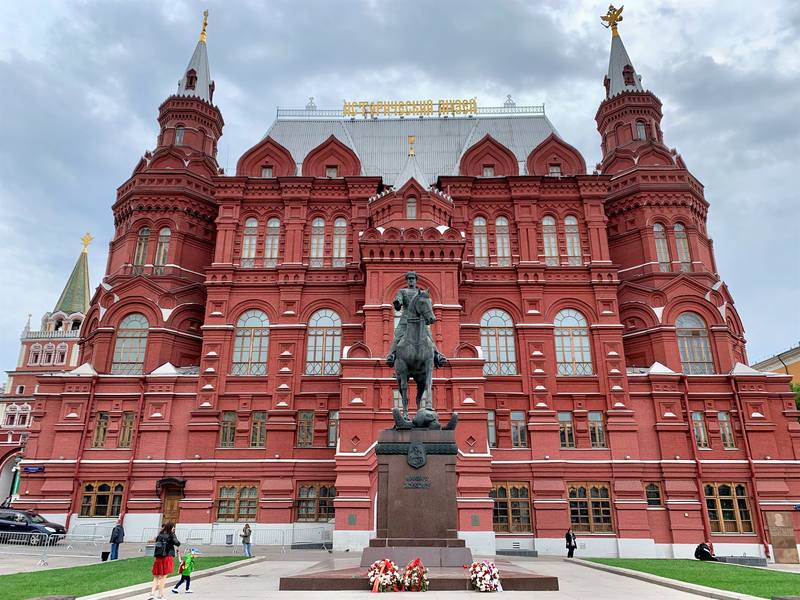 |
| |
1874–1883, the Historical Museum, Moscow, RUSSIA, Vladimir Shervud |
| |
|
| |
 |
| |
1889–1893, the Upper Trading Rows, Moscow, RUSSIA, Alexander Pomerantsev |
| |
|
| |
, Moscow, RUSSIA, Roman Klein.jpg) |
| |
1897–1912, the Museum of Fine Arts (since 1937 the Pushkin Museum), Moscow, RUSSIA, Roman Klein |
| |
|
| |
 |
| |
1899–1905, the Hotel Metropole, Moscow, RUSSIA, Lev Kekushev, Adolf Erikhson, William Walcot |
| |
|
| |
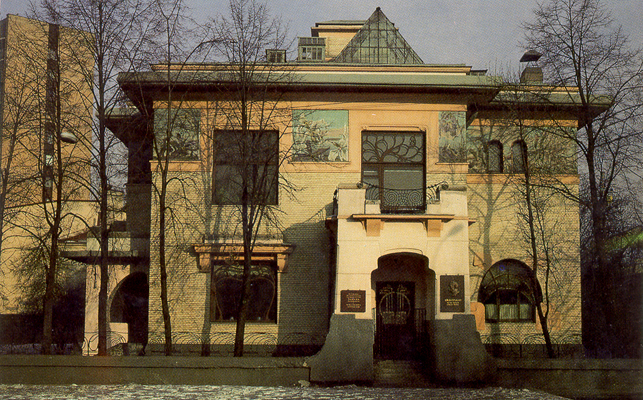 |
| |
1900–1902, a mansion for Stepan Riabushinsky, Moscow, RUSSIA, Fedor Shekhtel |
| |
|
| |
 |
| |
1902–1904, the Singer Building, Saint Petersburg, RUSSIA, Pavel Siuzor |
| |
|
| |
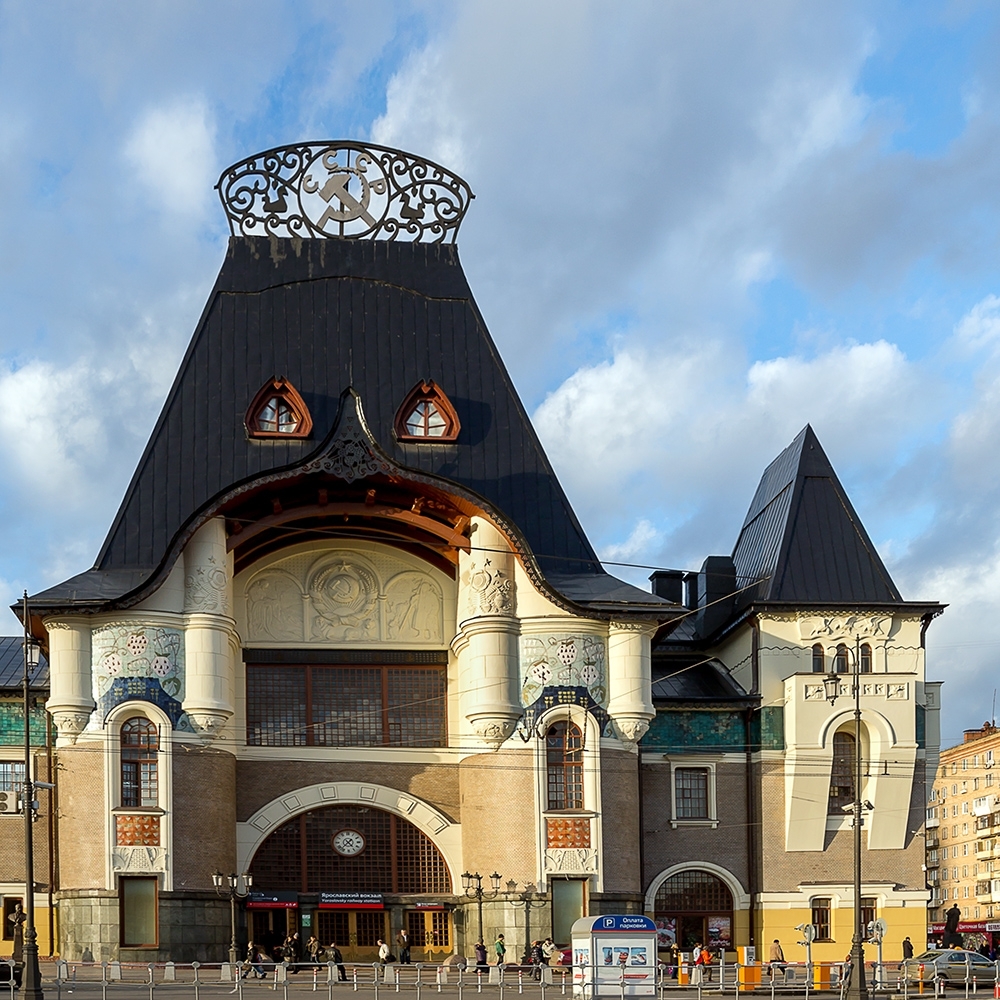 |
| |
1903, Moscow Yaroslavsky railway station, Moscow, RUSSIA |
| |
|
| |
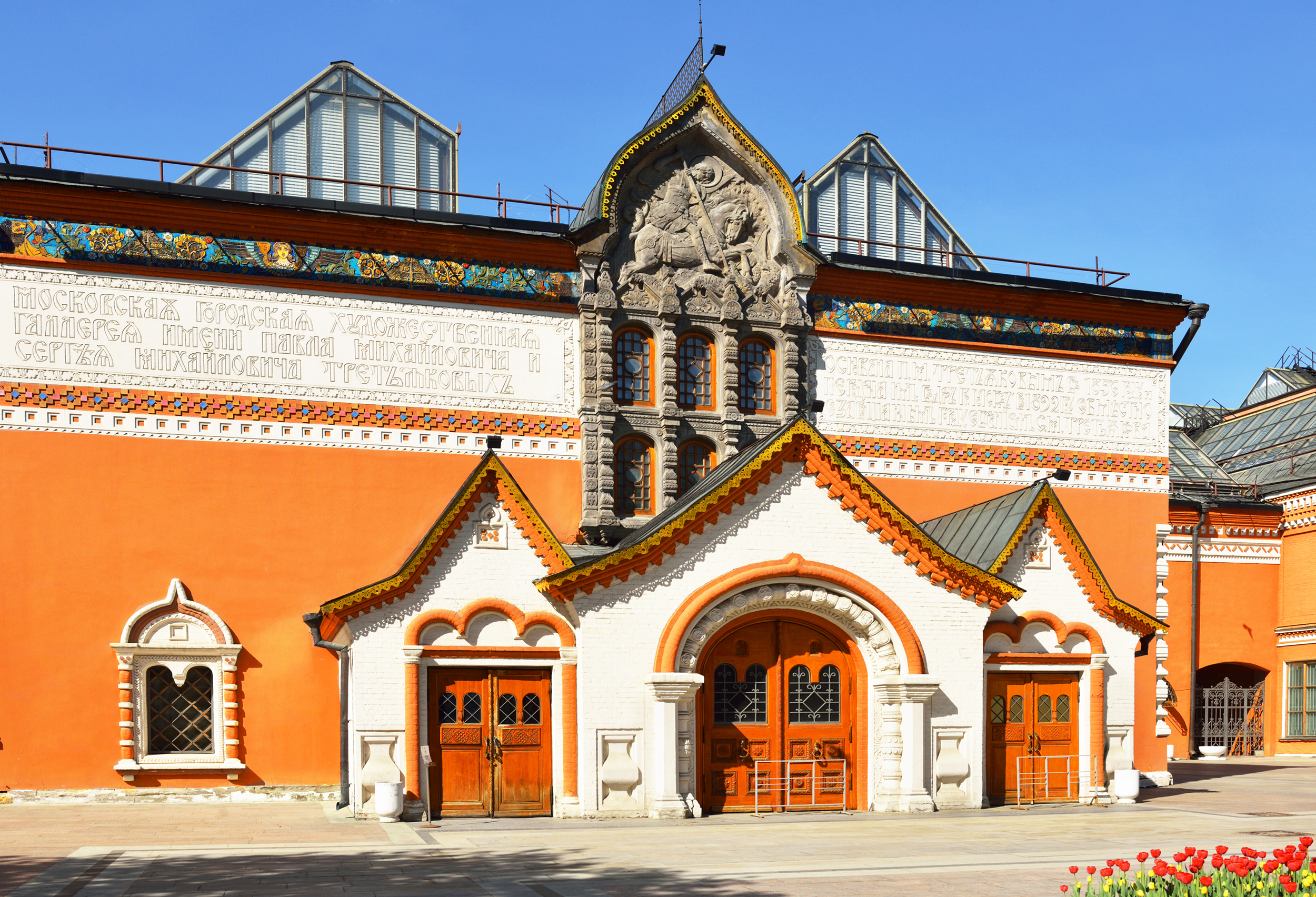 |
| |
c. 1905, the Tretiakov Gallery, Moscow, RUSSIA, Viktor Vasnetsov |
| |
|
| |
 |
| |
1906–1908, the Muir and Mirrielees department store, Moscow, RUSSIA, Roman Klein |
| |
|
| |
 |
| |
1907, Urtro Rossii building, Moscow, RUSSIA, Fedor Shekhtel |
| |
|
| |
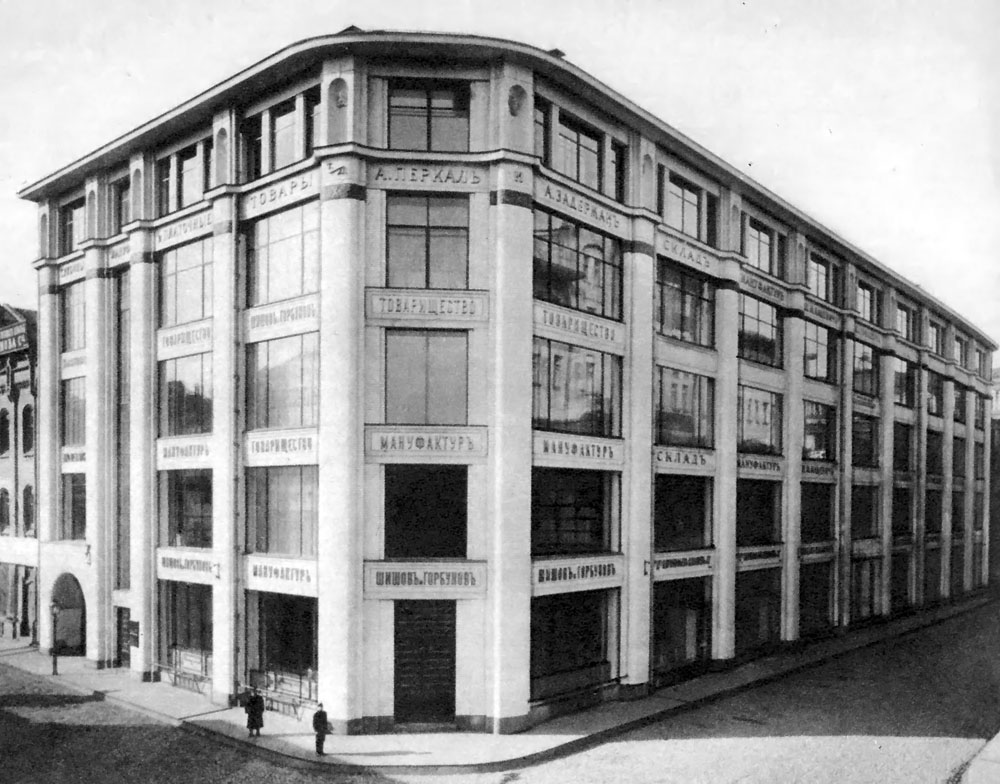 |
| |
1909, Moscow Merchants’ Society Building, Moscow, RUSSIA, Fedor Shekhtel |
| |
|
| |
 |
| |
1909, “lar” Restaurant, Moscow, RUSSIA, Adolf Erikhson |
| |
|
| |
 |
| |
1911–1912, the Hotel Astoria, Saint Petersburg, RUSSIA, Fedor Lidval |
| |
|
| |
 |
| |
1925–1927, the Izvestiia Building, Moscow, RUSSIA, Grigory Barkhin |
| |
|
| |
 |
| |
1926, Leningrad Textile Complex, Leningrad, RUSSIA, Erich Mendelsohn |
| |
|
| |
 |
| |
1926–1927, the Leyland Bus Garage, Moscow, RUSSIA, Konstantin Melnikov |
| |
|
| |
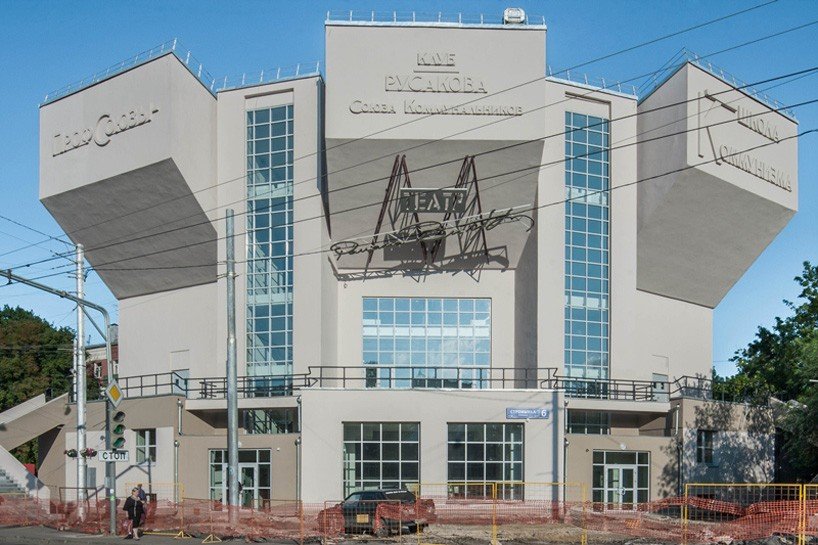 |
| |
1927–1928, the Rusakov Club, Moscow, RUSSIA, Konstantin Melnikov |
| |
|
| |
 |
| |
1927–1929, the Zuev Workers’ Club, Moscow, RUSSIA, Ilya Golosov |
| |
|
| |
|
| |
 |
| |
1927, MELNIKOV HOUSE, MOSCOW, RUSSIA, KONSTANTIN MELNIKOV |
| |
|
| |
 |
| |
1928, NARKOMFIN HOUSE, MOSCOW, RUSSIA, MOISEI GINZBURG |
| |
|
| |
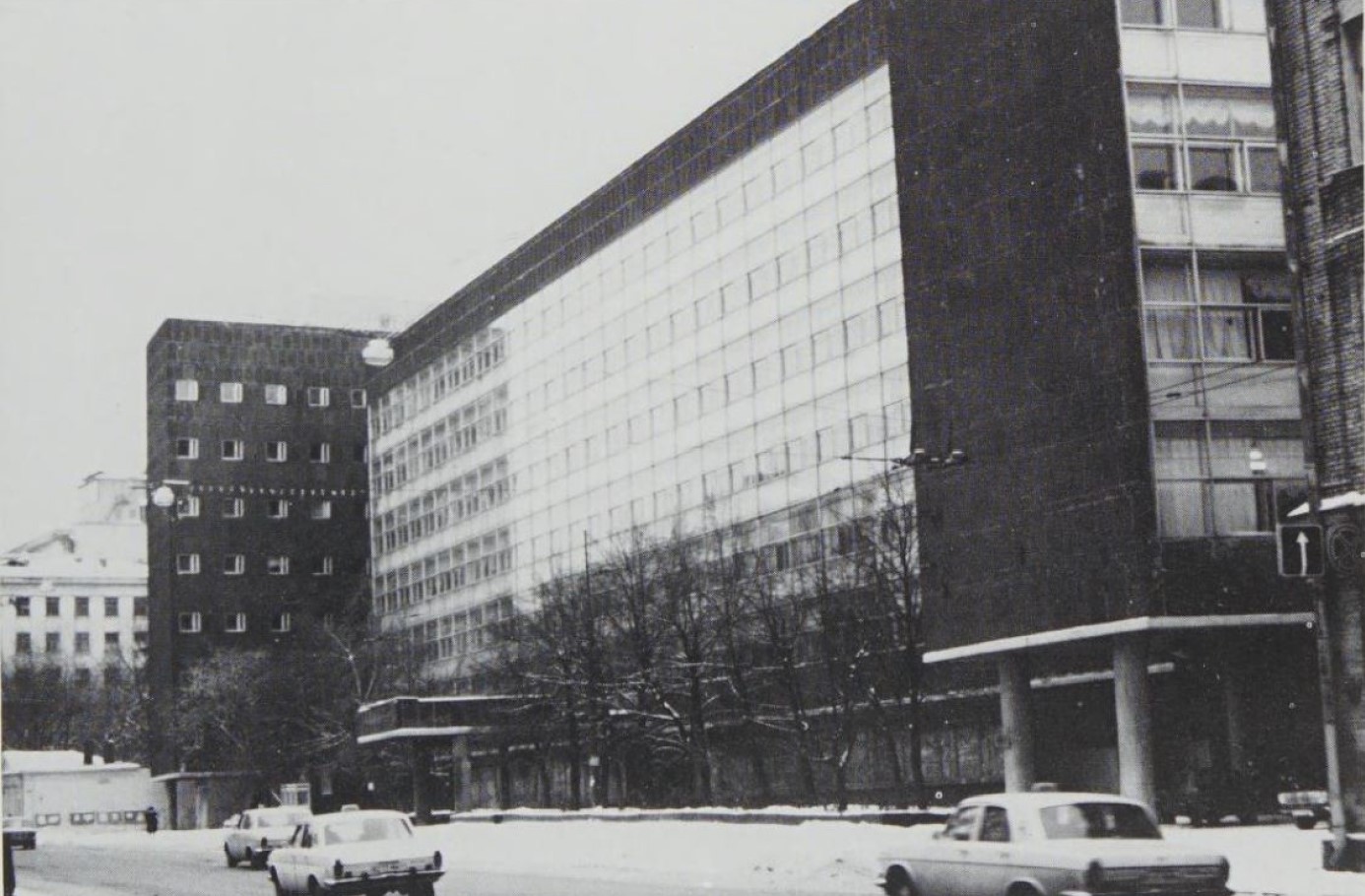 |
| |
1928-1935, Tsentrosoiuz Building, Moscow, RUSSIA, Le Corbusier |
| |
|
| |
 |
| |
1928-1940, Lenin State Library, Moscow, RUSSIA, Vladimir Shchuko, V. Gelfreikh |
| |
|
| |
 |
| |
1929, Mostorg Department Store, Moscow, RUSSIA, VESNIN BROTHERS |
| |
|
| |
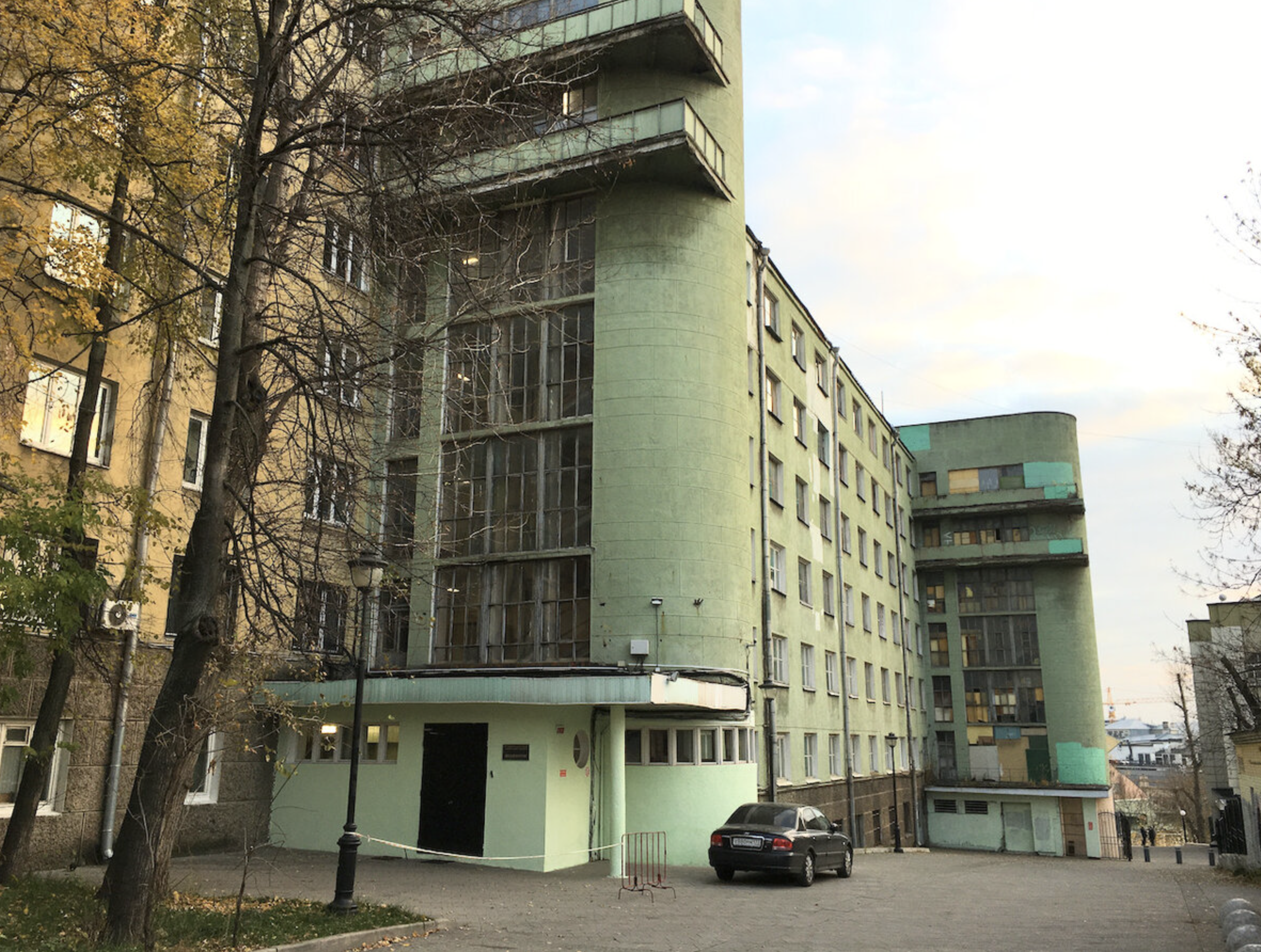 |
| |
1930, Student housing of Communist University of the National Minorities of the West, Moscow, USSR, G. Dankman |
| |
|
| |
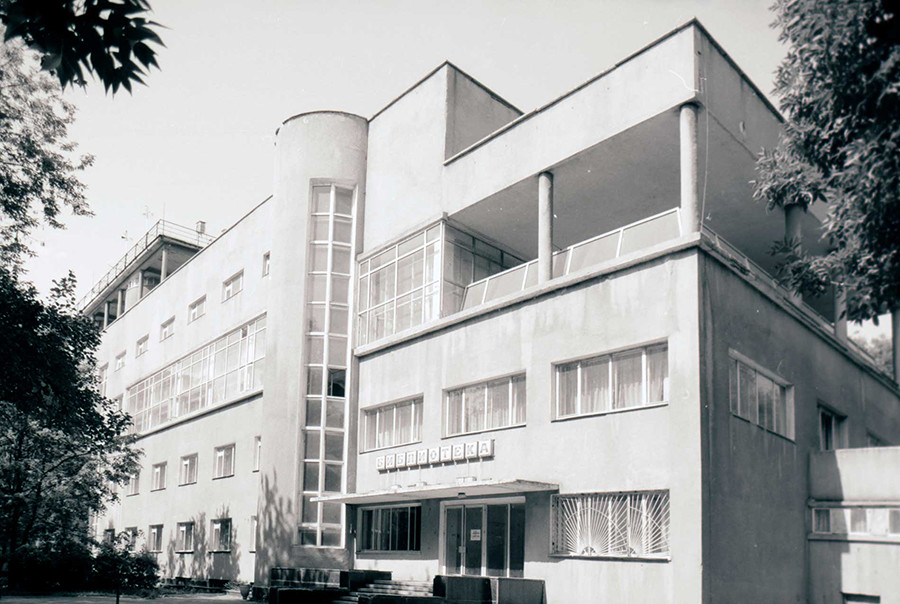 |
| |
1931–1937, the Likhachev Palace of Culture, Moscow, RUSSIA, Vesnin brothers |
| |
|
| |
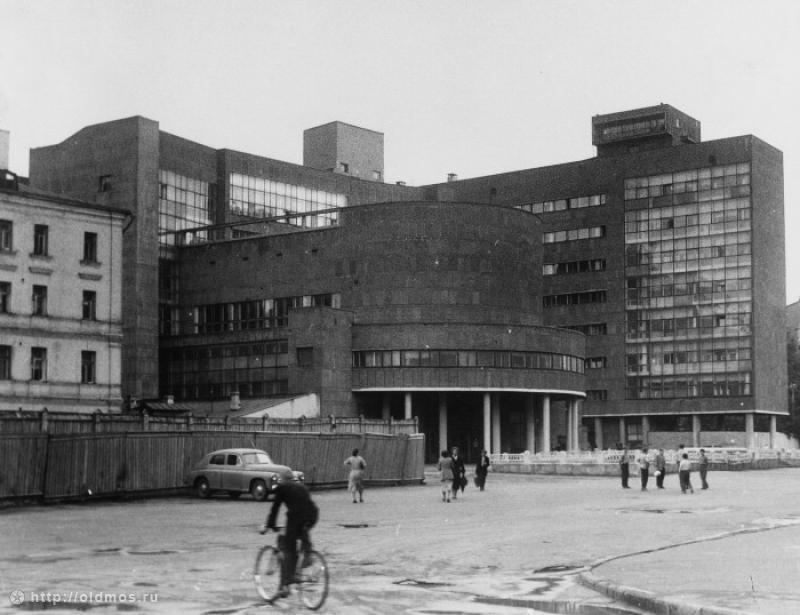 |
| |
1933, Centrosoyus, Moscow, Russia, LE CORBUSIER |
| |
|
| |
 |
| |
1933–1935, Palace of the Soviets, Boris Iofan, Vladimir Gelfreikh, Vladimir Shchuko |
| |
|
| |
 |
| |
1934, Apartment house, Marx Prospekt, Moscow, RUSSIA, Ivan Zholtovskii |
| |
|
| |
 |
| |
1937, Proletarian Region Club,
Moscow, RUSSIA, Vesnin brothers |
| |
|
| |
 |
| |
1949–1953, Moscow State University, Moscow, RUSSIA, Lev Rudnev, Pavel Abrosimov, Alexander Khriakov |
| |
|
| |
 |
| |
1954, Ministry of Foreign Affairs, Moscow, RUSSIA, M. Minkus, V. Gelfreikh |
| |
|
| |
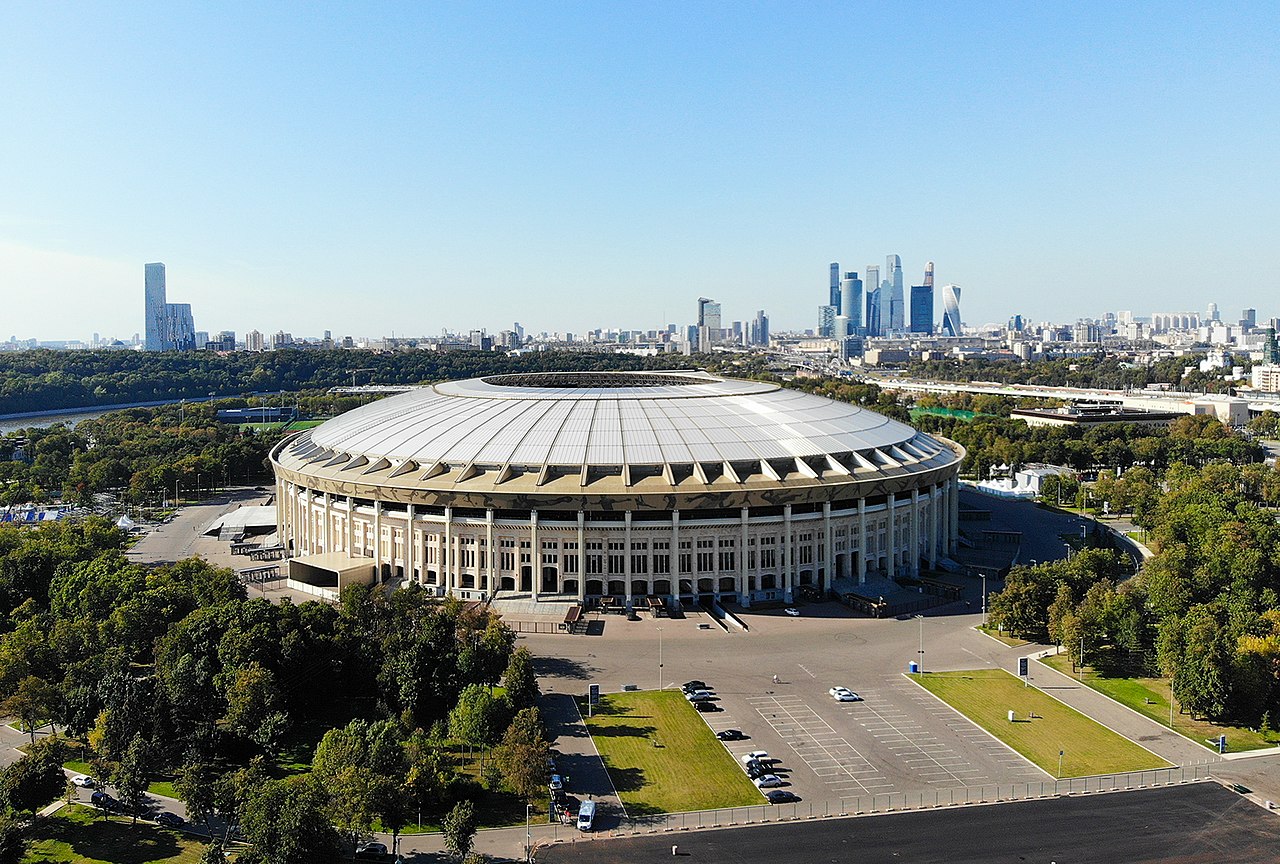 |
| |
1956, Luzhniki Stadium, Moscow, RUSSIA |
| |
|
| |
 |
| |
1958-1961, Pioneers Palace, Moscow, RUSSIA |
| |
|
| |
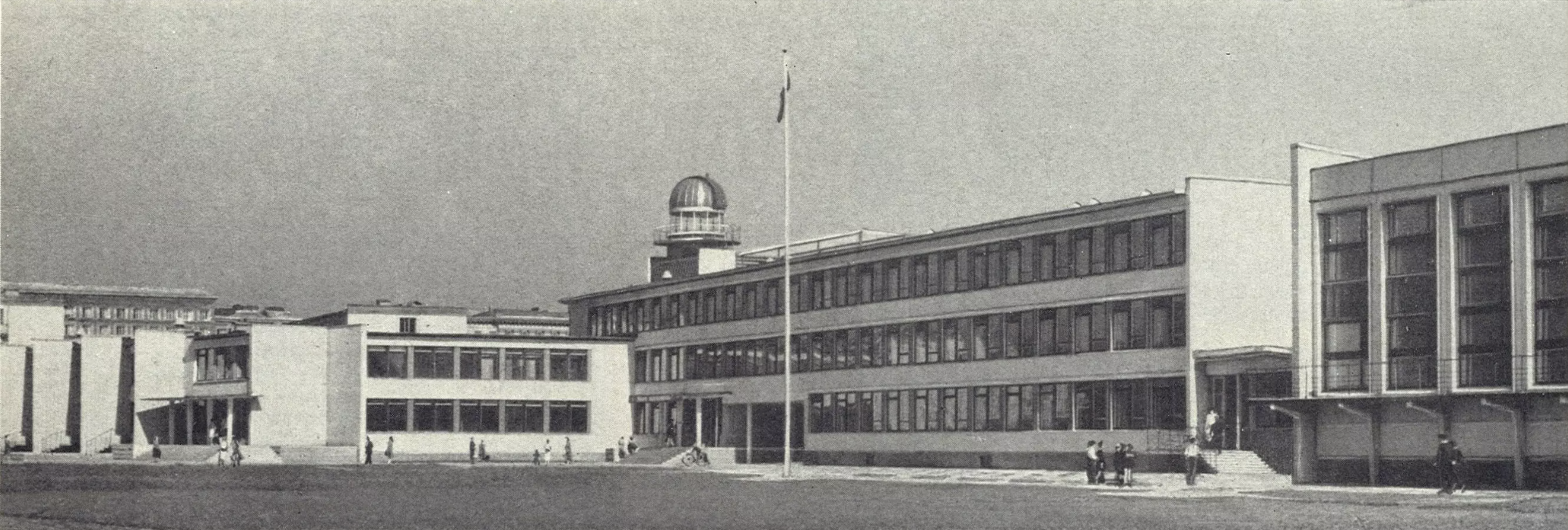 |
| |
1958-1968, School #345, Leningrad, USSR |
| |
|
| |
 .jpg) |
| |
1959–1961, the Kremlin Palace of Congresses, Moscow, RUSSIA, Mikhail Posokhin (in collaboration with A. Mndoiants and others)
|
| |
|
| |
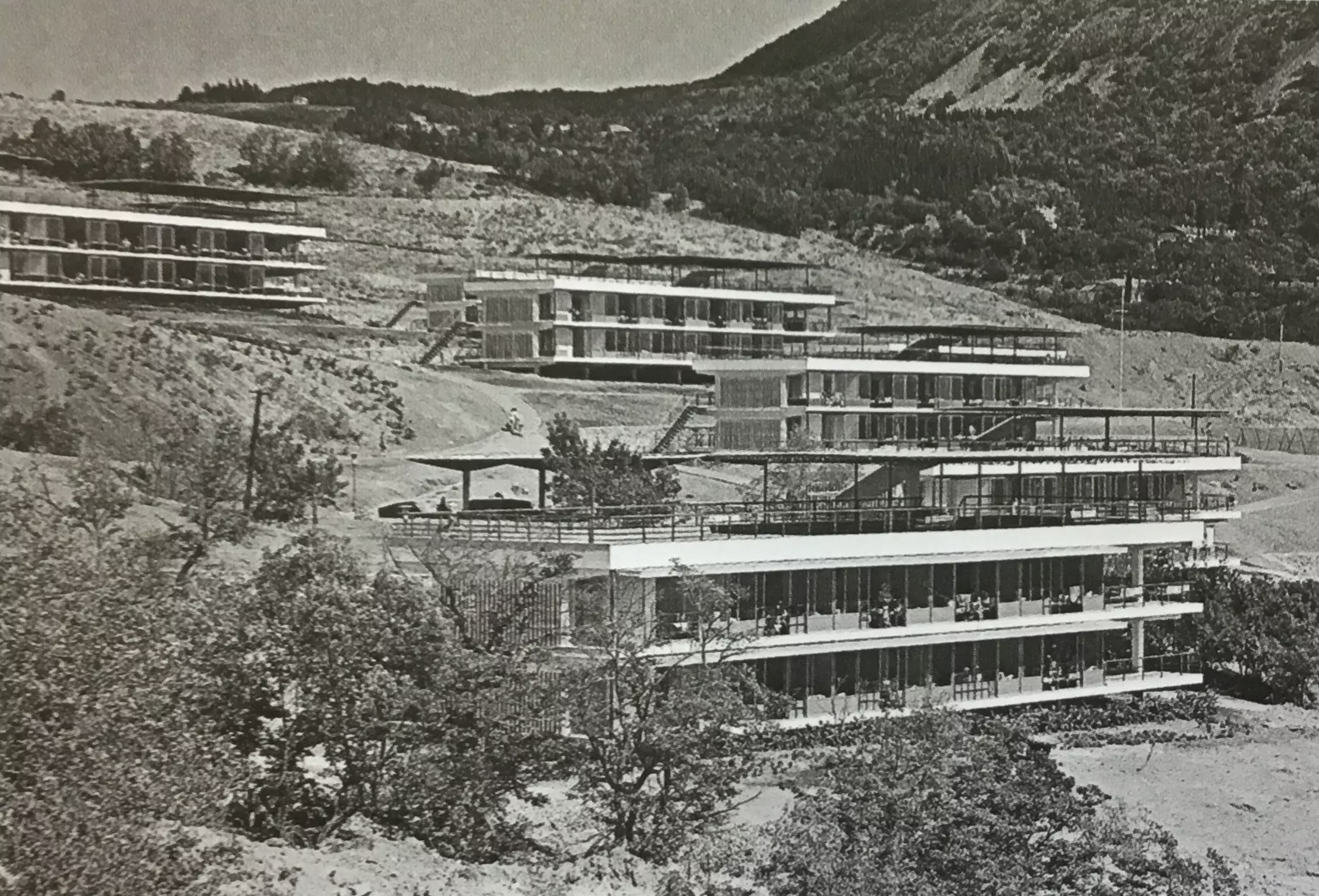 |
| |
1959-1961, Artek, Crimea, RUSSIA |
| |
|
| |
 |
| |
1962-1963, Prospekt Kalinina, Moscow, RUSSIA |
| |
|
| |
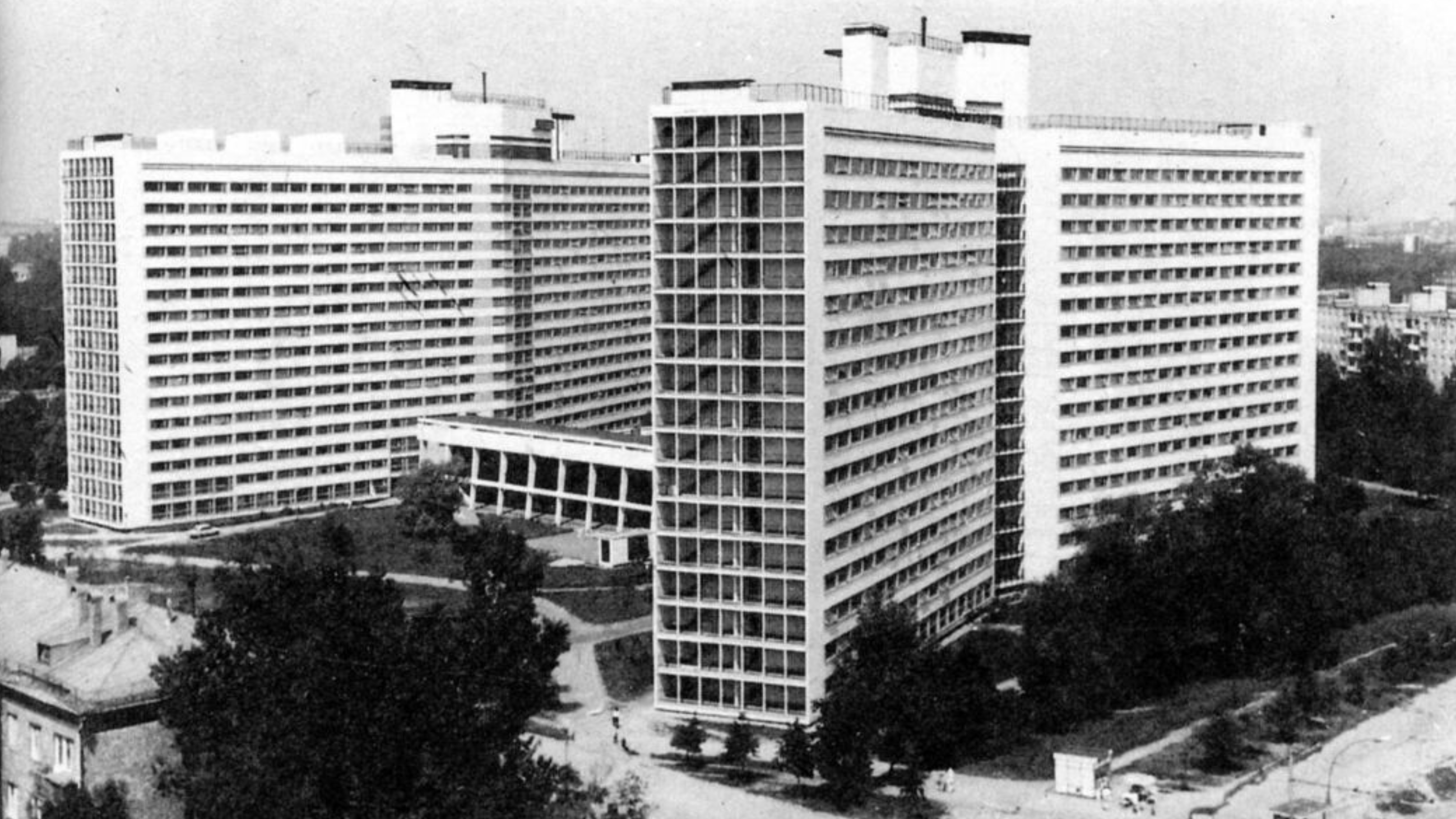 |
| |
1965-1971, Doma Aspirantov i Stazherov Mgu, Moscow, RUSSIA, N. Osterman |
| |
|
| |
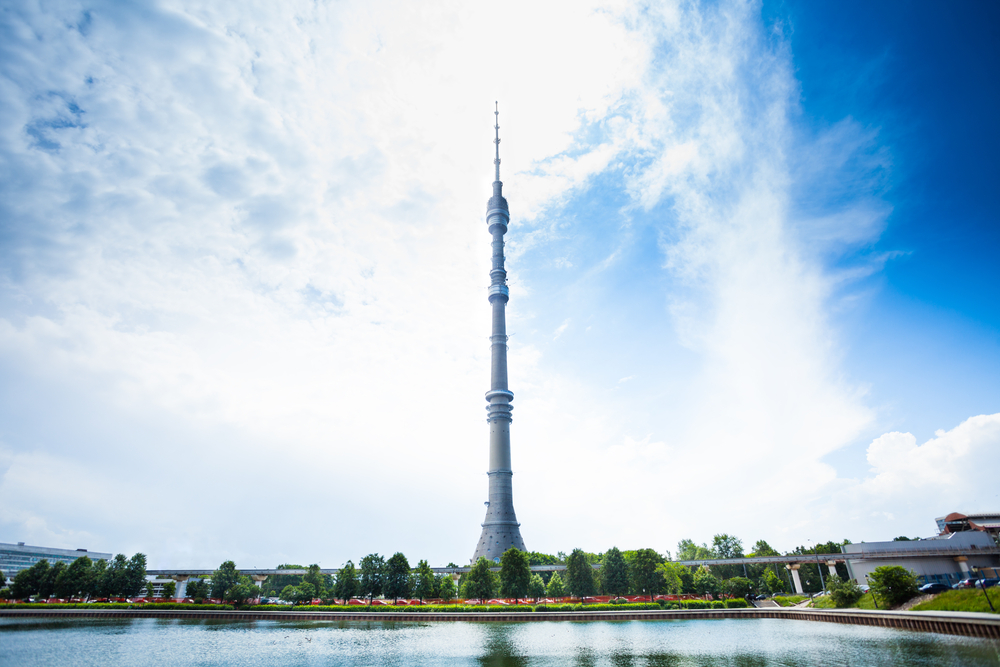 |
| |
1967, the Ostankino Television Tower, Moscow, RUSSIA, N.Nikitin, L.Batalov, and others |
| |
|
| |
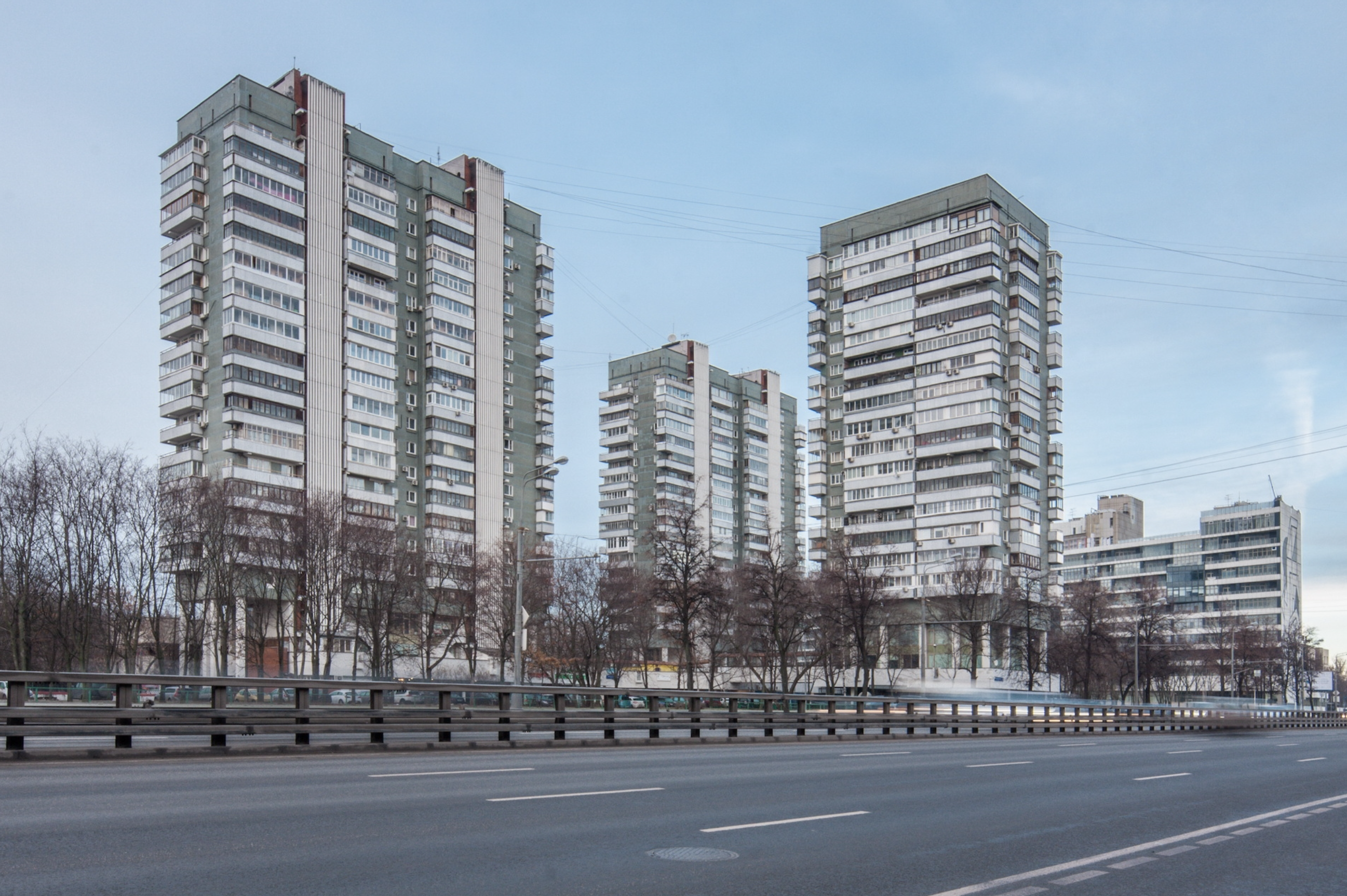 |
| |
1967-1974, Swan Residence, Moscow, RUSSIA, A. Meherson |
| |
|
| |
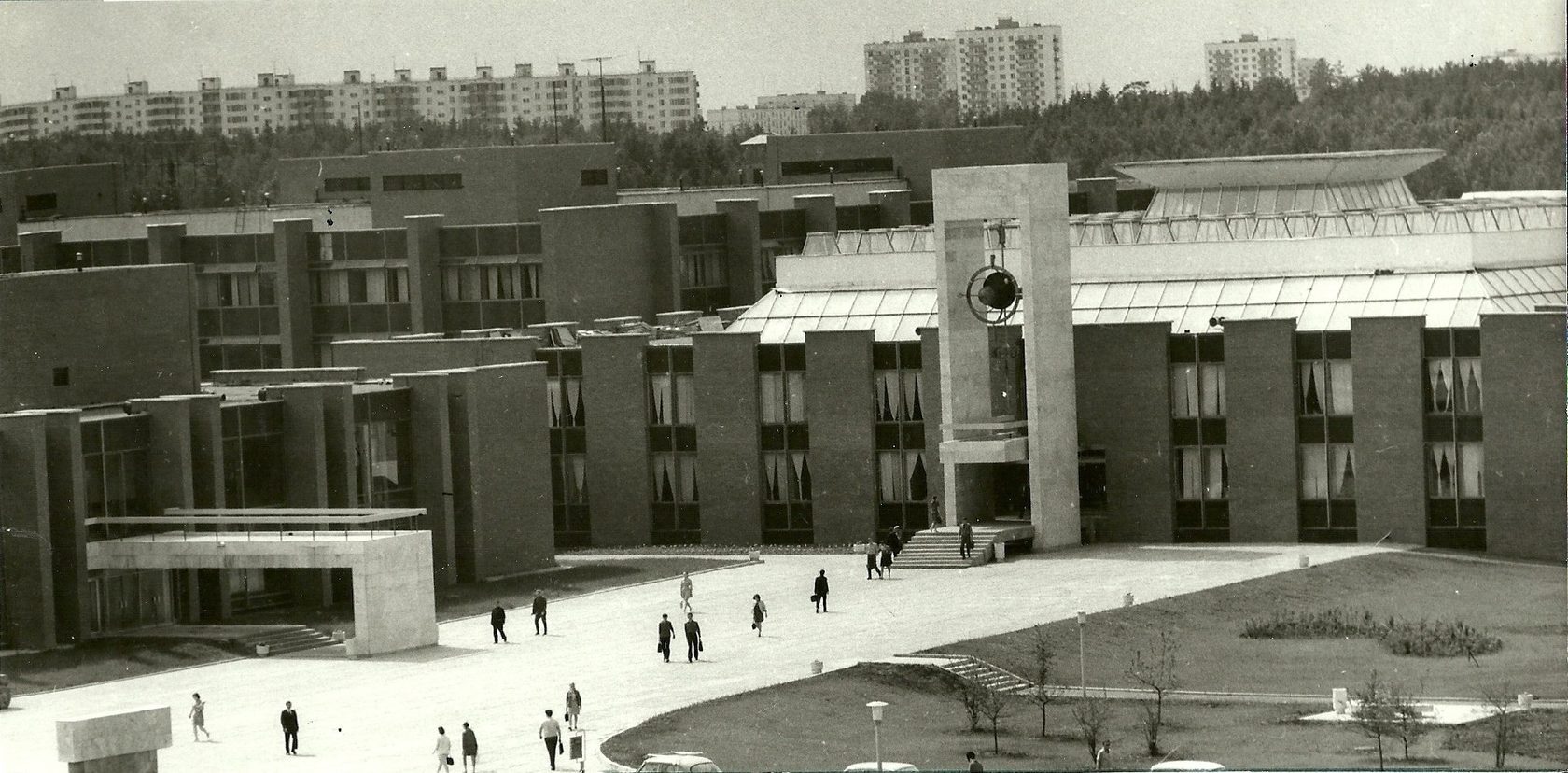 |
| |
1971, National Research University of Electronic Technology, Zelonograd, RUSSIA, Novikov F. |
| |
|
| |
 |
| |
1972, Ploschad Yunosti, Zelenograd, RUSSIA |
| |
|
| |
 |
| |
1973,VINTITI, Moscow, RUSSIA, Belopolsky, Ya. |
| |
|
| |
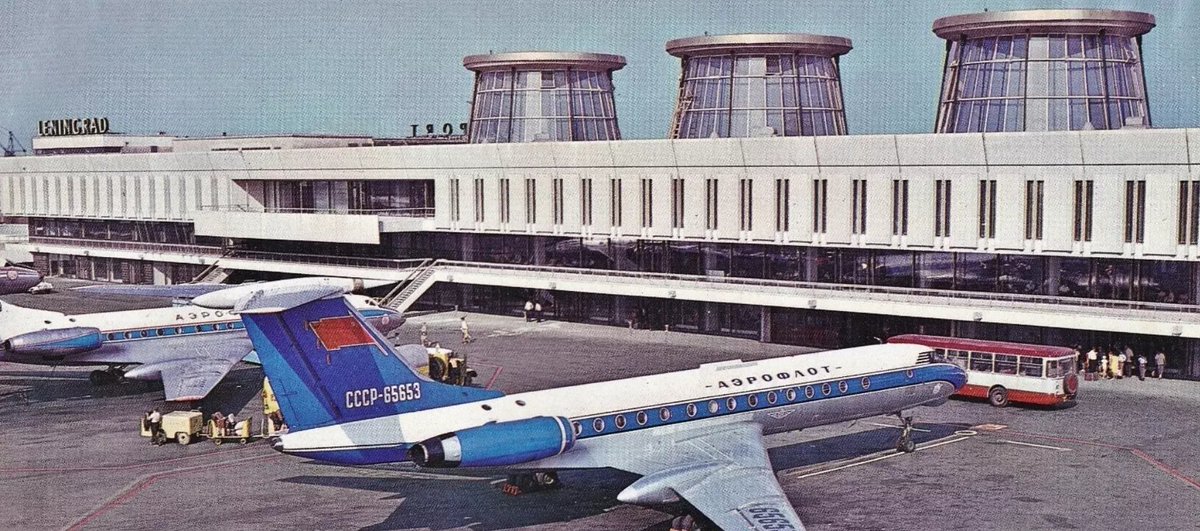 |
| |
1973, Pulkovo Airport, Saint Petersburg, RUSSIA, Zhuk A. |
| |
|
| |
 |
| |
1973-1990, Russian Academy of Sciences, Moscow, RUSSIA, Y. Platonov |
| |
|
| |
 |
| |
1974, Инженерный корпус Министерства автомобильных дорог Грузии, Tbilisi, Georgia, Dzhalaganiya Z. |
| |
|
| |
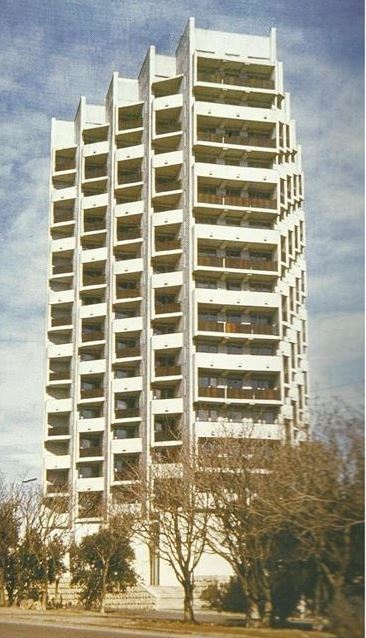 |
| |
1975, Apartment block, Baku, Azerbaijan, Belokon A.N. |
| |
|
| |
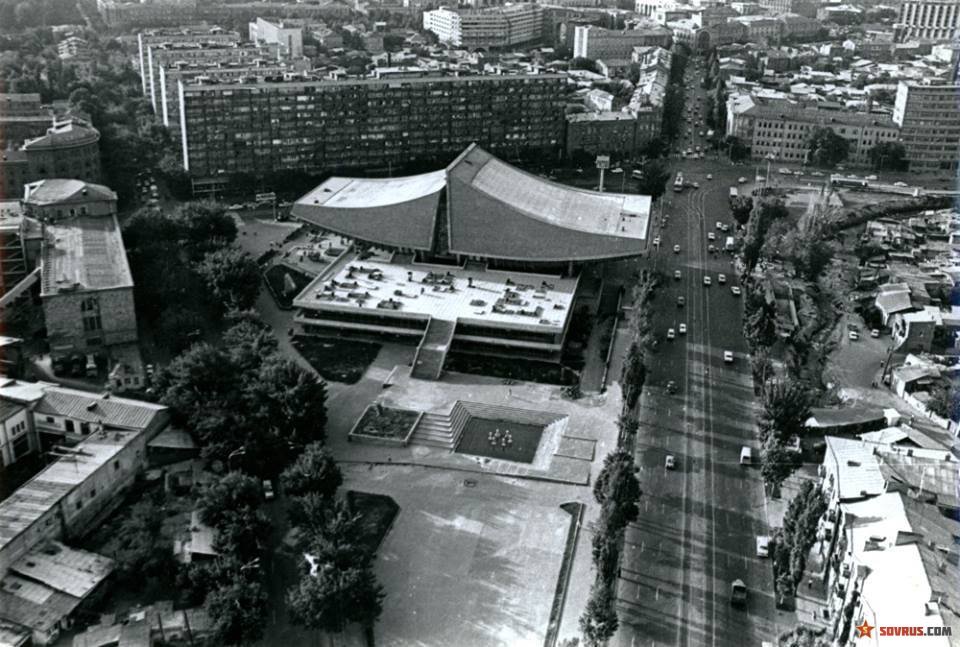 |
| |
1975, Rossiya Cinema, Yerevan, Armenia, Tarhanyan A. |
| |
|
| |
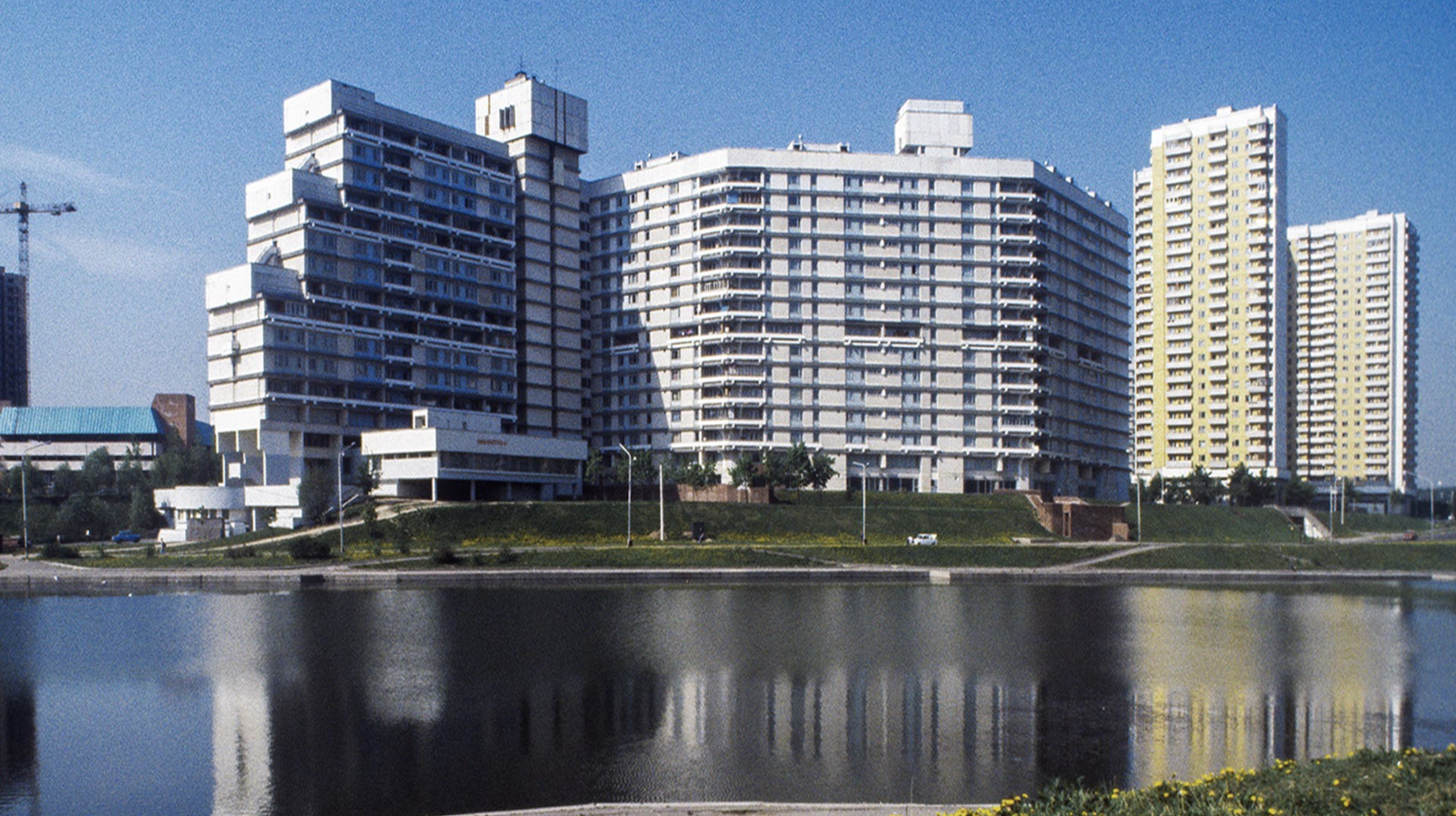 |
| |
1975-1982, Severnoe Chertanovo, Moscow, RUSSIA, GROUP OF ARCHITECTS |
| |
|
| |
 |
| |
1976-1988, Bioorganic Research Institute, Moscow, RUSSIA |
| |
|
| |
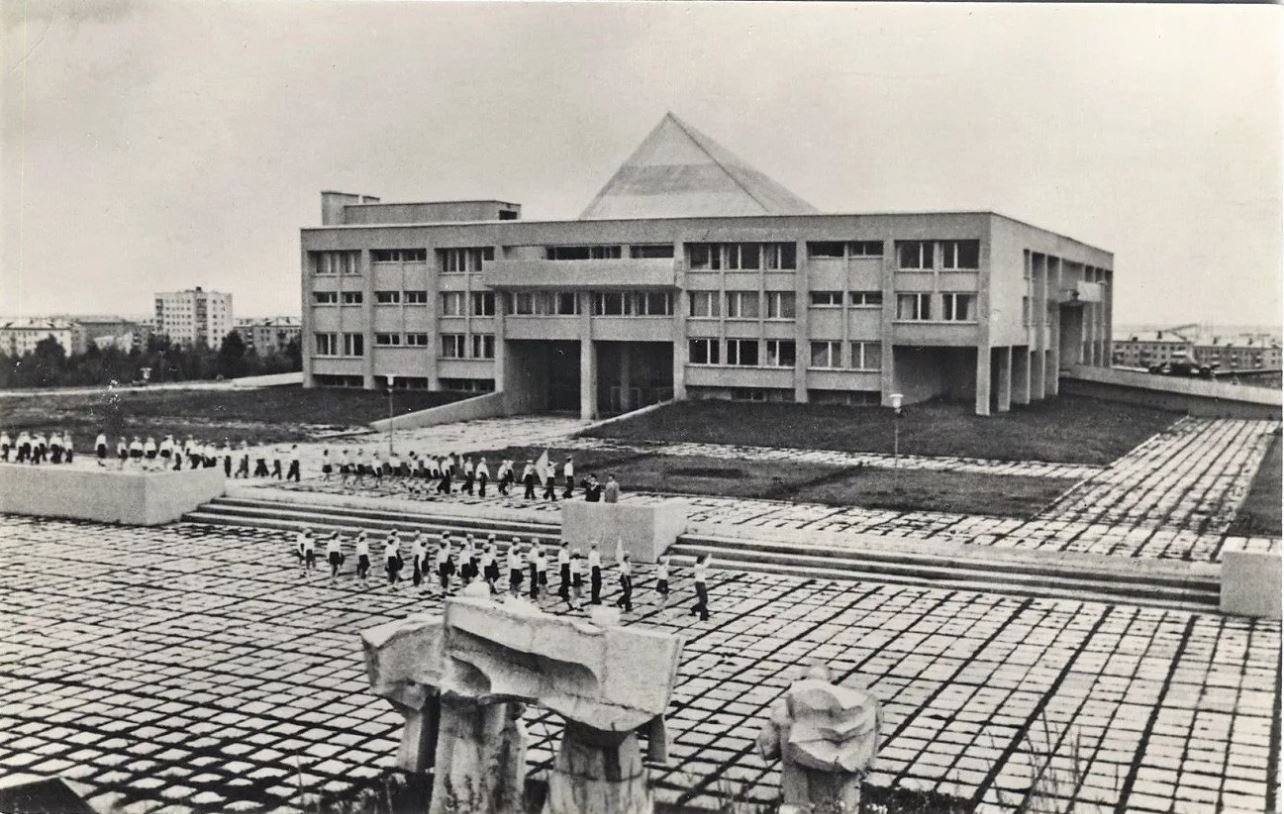 |
| |
1977, Dvorec Pionerov, Kirov, RUSSIA, Gazerov. L. |
| |
|
| |
 |
| |
1977, Dvorec Molodezhi, Yerevan, Armenia, Tarhanyan A. |
| |
|
| |
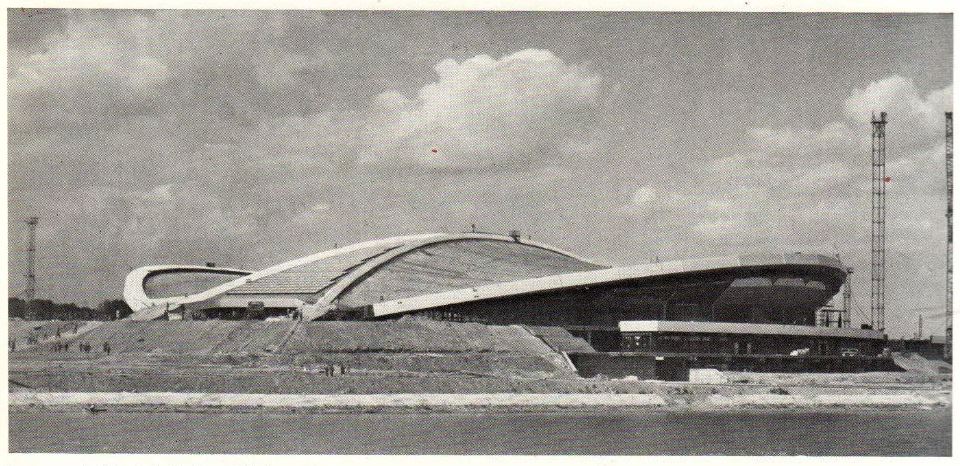 |
| |
1980, Cycling Track, Moscow, RUSSIA, Voronina N. |
| |
|
| |
 |
| |
1980, Olympic Village, Moscow, RUSSIA |
| |
|
| |
 |
| |
1986, House of Nuclear Workers, Moscow, RUSSIA, V. Voskresensky |
| |
|
| |
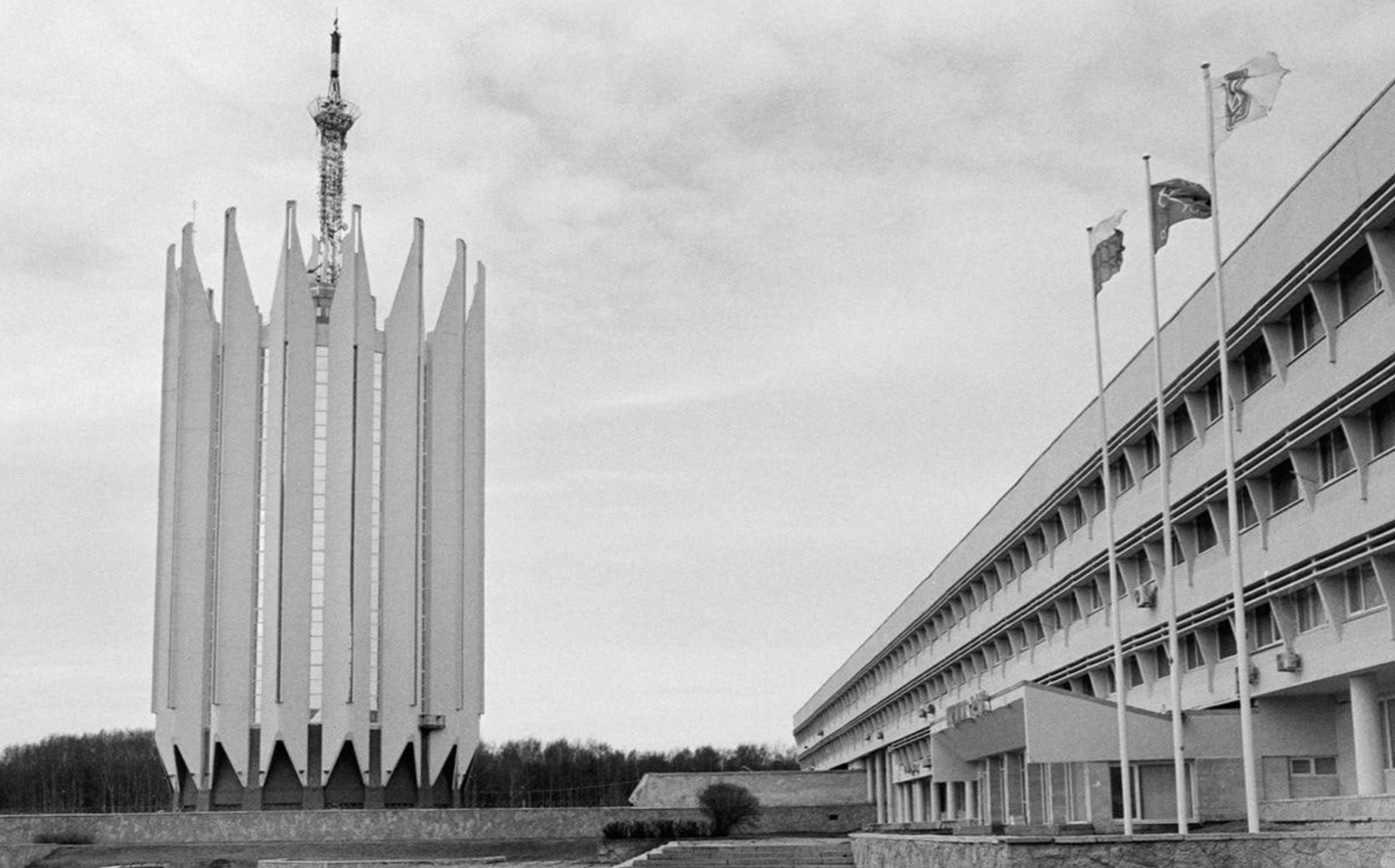 |
| |
1987, CNII Cyber Institute, Leningrad, USSR, S. Savin |
| |
|
| |
 |
| |
2011-2015, Garage Museum of Contemporary Art , Moscow, RUSSIA, REM KOOLHAAS |
| |
|
| |
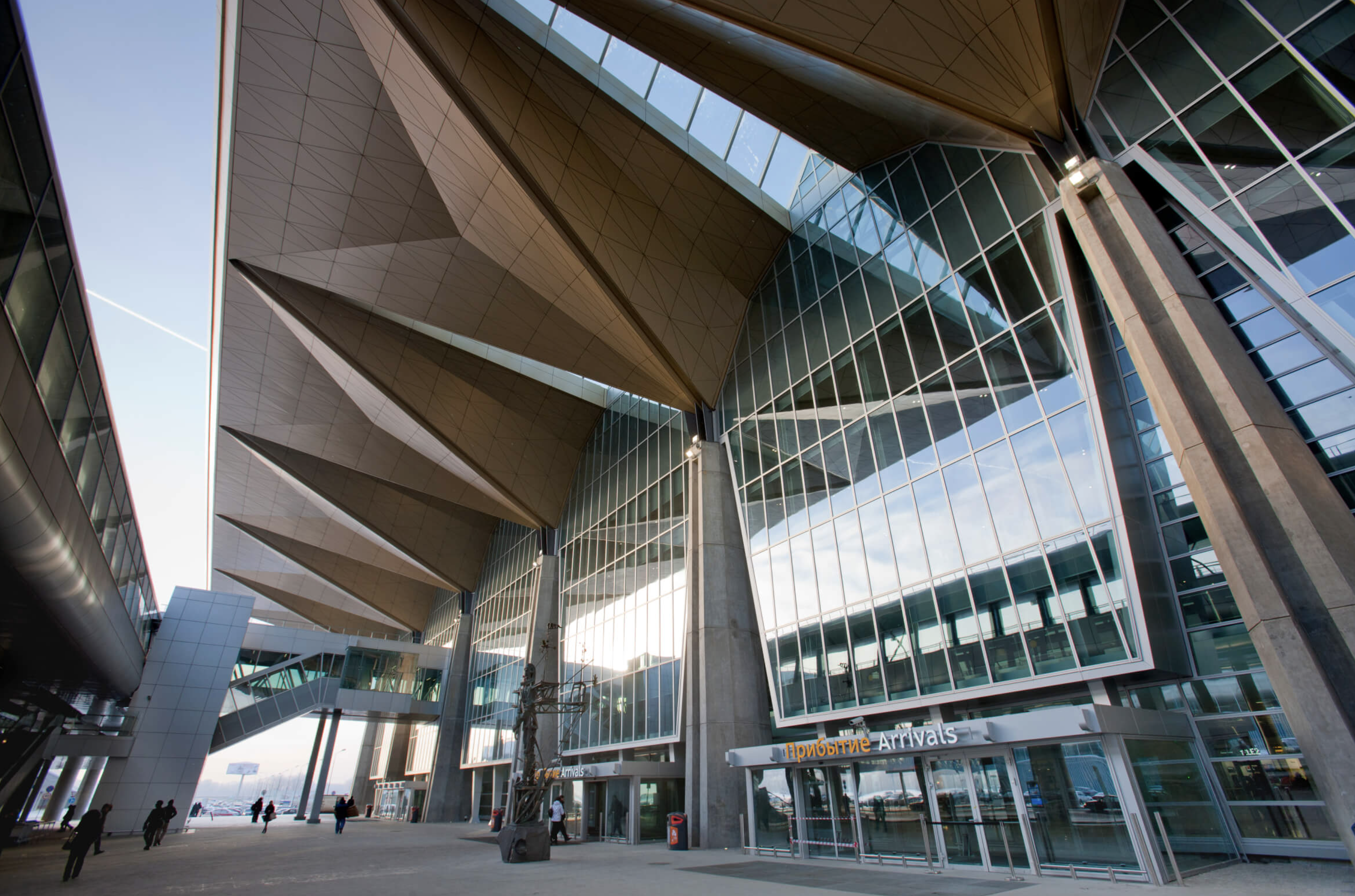 |
| |
2014, Pulkovo Airport, St. Petersburg, Russia, NICHOLAS GRIMSHAW |
| |
|
| |
 |
| |
2015, GES 2, MOSCOW, RUSSIA, RENZO PIANO |
| |
|
| |
|
| |
|
| |
|
| |
|
| |
|
| |
|
| ARCHITECTS |
|
| |
ARCHITECTS: RUSSIA and USSR |
| |
|
| |
|
| |
|
| |
|
| |
|
| |
|
| |
|
| BUILDINGS |
|
| |
1911, Post Office, Moscow, RUSSIA, VESNIN BROTHERS |
| |
|
| |
1923, Palace of Labor (Third prize, competition),
Moscow, RUSSIA, VESNIN BROTHERS |
| |
|
| |
1924, Pravda Newspaper Building (unbuilt),
Moscow, RUSSIA, VESNIN BROTHERS |
| |
|
| |
1927, MELNIKOV HOUSE, MOSCOW, RUSSIA, KONSTANTIN MELNIKOV |
| |
|
| |
1927–1935, Viipuri Library, Vyborg, Russia, ALVAR AALTO |
| |
|
| |
1928, NARKOMFIN HOUSE, MOSCOW, RUSSIA, MOISEI GINZBURG |
| |
|
| |
1929, RUSAKOV CURTURE HOUSE, MOSCOW, RUSSIA, KONSTANTIN MELNIKOV |
| |
|
| |
1933, Centrosoyus, Moscow, Russia, LE CORBUSIER |
| |
|
| |
1937, Proletarian Region Club,
Moscow, RUSSIA, VESNIN BROTHERS |
| |
|
| |
2011-2015, Garage Museum of Contemporary Art , Moscow, RUSSIA, REM KOOLHAAS |
| |
|
| |
2014, Pulkovo Airport, St. Petersburg, Russia, NICHOLAS GRIMSHAW |
| |
|
| |
2015, GES 2, MOSCOW, RUSSIA, RENZO PIANO |
| |
|
| |
|
| |
|
| |
|
| |
|
| |
|
| |
|
| |
|
| MORE |
|
| |
INTERNAL LINKS
Art Nouveau; Constructivism; Golosov, Ilya; Leonidov, Ivan Ilich; Melnikov, Konstantin; SOVIET ARCHITECTURE; Vesnin, Alexander, Leonid, and Viktor
FURTHER READING
Modern Russian architecture and particularly the early Soviet avantgarde have received considerable attention from Western scholars, as well as from Russians. The following list is a sample of some of the more prominent works.
Arkhitektura SSSR, January-February 1986
Barkhin, M.G., et al. (editors), Mastera sovetskoi arkhitektury ob arkhitekture (Masters of Soviet Architecture on Architecture), 2 vols., Moscow: Iskusstvo, 1975
Bliznakov, Milka, “The Realization of Utopia: Western Technology and Soviet AvantGarde Architecture,” in Reshaping Russian Architecture: Western Technology, Utopian Dreams, edited by William C.Brumfield, Cambridge and New York: Cambridge University Press, 1991
Borisova, Elena A., and Tatiana P.Kazhdan, Russkaia arkhitketura kontsa XIX—nachala XX veka (Russian Architecture of the End of the 19th Century and the Beginning of the 20th), Moscow: Izd-vo “Nauka,” 1971
Brumfield, William C., The Origins of Modernism in Russian Architecture, Berkeley: University of California Press, 1991 ——, A History of Russian Architecture, Cambridge and New York: Cambridge University Press, 1993
Cohen, Jean-Louis, Le Corbusier et la mystique de l’USSR, Brussels: Mardaga, 1987; as Le Corbusier and the Mystique of the USSR, translated by Kenneth Hylton, Princeton, New Jersey: Princeton University Press, 1991
Cooke, Catherine, Russian Avant-Garde: Theories of Art, Architecture, and the City, London: Academy Editions, 1995
Ginzburg, Moisei IAkovlevich, Stil i epokha, Moscow: Gosudarstvennoe Izdatelstvo, 1924; as Style and Epoch, translated and edited by Anatole Senkevitch, Jr., Cambridge, Massachusetts: MITPress, 1982
Yaralov, Yurii Stepanovich, compiler, Zodchie Moskvy (Architects of Moscow), edited by S.M.Zemtsov, 2 vols., Moscow: Moskovskii Rabochii, 1988
Khan-Magomedov, Selim O., Pioneers of Soviet Architecture: The Search for New Solutions in the 1920s and 1930s, translated by Alexander Lieven, edited by Catherine Cooke, New York: Rizzoli, and London: Thames and Hudson, 1987
Khazanova, V.E., Sovetskaia arkhitektura pervykh let Oktiabria, 1917–1925 gg. (Soviet Architecture of the First Years of October, 1917–1925), Moscow: Nauka, 1970
Russian avant-garde
Lissitzky, El, Russland: Architektur für eine Weltrevolution, Berlin: Ullstein, 1965; as Russia: An Architecture for World Revolution, translated by Eric Dluhosch, Cambridge, Massachusetts: MIT Press, 1970
Lodder, Christina, Russian Constructivism, New Haven, Connecticut: Yale University Press, 1983
Riabushin, A.V., and N.I. Smolina, Landmarks of Soviet Architecture, 1917–1991, New York: Rizzoli, 1992
Starr, S.Frederick, Melnikov: Solo Architect in a Mass Society, Princeton, New Jersey: Princeton University Press, 1978
Былинкин Н.П., А.М.Журавлев, И.В.Шишкина и др., Современная советская архитектура, Стройиздат, 1985
Основы понимания архитектуры
Хазанова В.Э., Советская архитектура первой пятилетки: проблемы города будущего
Хан-Магомедов С.О., Архитектура Запада. Мастера и течения, Стройиздат, 1972
Хан-Магомедов С. О., ВХУТЕМАС, Издательство Ладья, 1995
ИНХУК и ранний конструктивизм
Хан-Магомедов С.О., Кривоарбатский переулок, 10
Хан-Магомедов С. О., Константин Мельников, Стройиздат, 1990
Хан-Магомедов С.О., Пионеры советского дизайна, Галарт, 1995
Хан-Магомедов С.О., Супрематизм и архитектура (проблемы формообразования)
Pioneers of Soviet Architecture: The Search for New Solutions in the 1920s and 1930s
Современный русский деревянный дом
Дербент
Москва: архитектура советского модернизма. 1955–1991. Справочник-путеводитель
Ленинград. Архитектура советского модернизма. 1955-1991. Справочник-путеводитель
История советской архитектуры
«Пришел, увидел — побежден!» Советские и британские архитекторы в 1930–1960-е годы
Архитектура Дома Наркомфина вчера и сегодня |
| |
|
|

